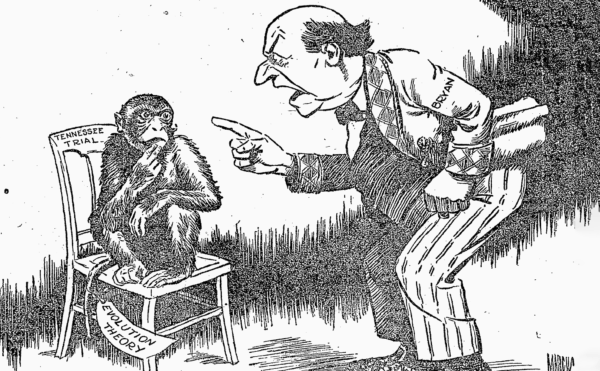In this episode of The Disappearing Spoon—the third in a three-part series on legendary physicists and their dumbest mistakes—host Sam Kean explains how a hasty, emotional error about black holes pushed physicist Stephen Hawking into his most famous discovery.
Listen to Part 1: Isaac Newton >>
Listen to Part 2: Albert Einstein >>
About The Disappearing Spoon
The Science History Institute has teamed up with New York Times best-selling author Sam Kean to bring a second history of science podcast to our listeners. The Disappearing Spoon tells little-known stories from our scientific past—from the shocking way the smallpox vaccine was transported around the world to why we don’t have a birth control pill for men. These topsy-turvy science tales, some of which have never made it into history books, are surprisingly powerful and insightful.
Credits
Host: Sam Kean
Senior Producer: Mariel Carr
Producer: Rigoberto Hernandez
Associate Producer: Padmini Raghunath
Audio Engineer: Jonathan Pfeffer
Transcript
As a reminder, this is part three in a three-part series on legendary physicists and their dumbest mistakes. To start today’s episode, let’s play a little game. I’ll name a famous scientist, and you say the first theory or idea that comes to mind.
Start with Isaac Newton. You’re probably thinking… gravity, right?
Next up, Marie Curie. She brings to mind… radioactivity.
What about Charles Darwin? Probably… evolution.
Now for a hard one. Stephen Hawking. To be sure, you can probably call to mind certain things about him as a person. The wheelchair. That book he wrote, A Brief History of Time. That unforgettable voice.
But what exactly did Hawking do scientifically? Not many people know. So, today’s episode is about Hawking’s most famous discovery—which was intimately tied up with a horrible blunder. But as Einstein showed us last week, sometimes a ghastly blunder is the surest way forward.
Hawking’s big discovery involved black holes. Black holes arise when ungodly amounts of matter get crushed together into a small space. Because of all that concentrated matter, black holes have huge gravitational fields. So huge that nothing can escape their clutches. Not even light, the fastest thing in the universe. In fact, that’s why black holes are black—light goes in, but never comes out.
Scientists first predicted black holes on paper in the early 1900s. But even until the 1960s, many physicists didn’t believe that black holes existed. Indeed, many regarded them with something like horror. There was just something monstrous about them, almost unholy.
But black holes appealed to Stephen Hawking, who had something of an impish side. And in the early 1970s, Hawking made an odd discovery about them.
All black holes have something called an “event horizon.” It’s an invisible but real boundary around them, at a certain distance away. If you’re on the far side of the boundary, you can theoretically escape a black hole if you run fast enough. You won’t get sucked in.
But as soon as you cross that boundary, even with your pinky toe, you’re doomed. The black hole will suck you in. It sounds dramatic, and it is: the event horizon is the horizon of disaster. Anything on one side is safe, anything on the other side is doomed. Effectively, then, the event horizon measures the size of a black hole.
Now let’s imagine someone falling into a black hole. They would undergo what’s sometimes called spaghetti-fication. That is, the forces of the black hole would exert such huge strains on their body—and exert those strains so quickly—that they’d be pulled into a long, thin piece of spaghetti before being obliterated. Not a great way to go.
Something else would happen as well, something interesting. Again, black holes suck things in because they have so much mass. And their sucking power is a direct function of their mass. A small black hole with relatively little mass would have less sucking power than a big black hole with lots of mass.
Moreover, the small black hole would also have a smaller event horizon. That is, you could tiptoe closer to a small black hole without getting sucked in than you could to a big black hole. Overall, then, the sucking power and the event horizon both depend on the mass.
So think what would happen if someone—or something—fell into a black hole. That person or thing has mass. So the overall mass of the black hole would now rise. And when the mass rises, so does the sucking power and the event horizon. As I mentioned, the event horizon effectively measures the size of black holes. So the net result is that when something falls into a black hole, the black hole gets bigger. It’s like the blob. It eats, and it grows.
Now, people knew these things before Stephen Hawking. But Hawking made an unusual connection here, the kind that only a genius sees.
By definition, nothing can escape a black hole. Once something goes in, it’s stuck. So black holes and their event horizons only grow bigger over time. They never grow smaller.
That pinged something in Hawking’s memory. Because there’s another quantity in physics that shows that same property. It’s called entropy.
Entropy comes from the field of thermodynamics, the study of heat. Entropy is essentially a measure of disorder, of chaos. And according to the laws of thermodynamics, entropy never ever goes down; disorder always increases. It’s why old buildings and things always spontaneously decay but never spontaneous heal themselves. Entropy-disorder always increases.
For a long time, scientists thought entropy was unique in this. Other physical quantities could go up or down in value; entropy alone went one direction. But Hawking proposed that the size of black holes also belongs on this elite list. As far as anyone knew, those were the only two quantities in the universe that never decreased.
Now, Hawking didn’t think too much about this connection. He was just being clever in pointing it out. He certainly didn’t think there was some sort of deep link between entropy and black holes. In fact, he resisted the very idea.
For one thing, if black holes have entropy, that implies that they have energy, heat. That also implies they have a temperature, which is a little weird. How would you measure the temperature of a black hole? Stick a thermometer in there? It’s silly.
Moreover, if black holes had heat, they would also have to radiate energy into cold outer space. This radiated energy would be in the form of light rays. But that’s a contradiction. Remember, nothing can escape a black hole, not even light. Therefore, Hawking said, black holes don’t radiate heat.
In a deeper sense, Hawking was saying that the laws of thermodynamics simply didn’t apply to black holes. They were such monstrous singularities that the very laws of physics broke down in their presence. Overall, then, the fact that entropy and black-hole size were the only two known quantities that always increased was just a coincidence—nothing more.
Or so Hawking thought. But one person was not convinced.
Hawking’s foil here was an unlikely one. Whereas Hawking had been a boy genius growing up in England, and attended posh Cambridge and Oxford, Jacob Bekenstein was the son of poor Jewish refugees from Mexico. His dad was a carpenter.
But Jacob had some smarts. He was fascinated by Sputnik, and used to build homemade rockets from chemicals that he bought in medical-supply stores. When his family moved to New York in the 1960s, he pursued a Ph.D. in physics.
His mentor was named John Wheeler, a true oddball. Wheeler was a staunch U.S. patriot during the Cold War, but also had communist friends. He was a stern, straight-ticket conservative, but adored the civil rights movement. When Wheeler got bored at meetings—which was often—he’d randomly pop paper bags <POP> to liven things up. Which didn’t exactly endear him to the speakers.
Still, Wheeler was a good physicist; he actually coined the term “black hole.” And he saw something in Bekenstein. Perhaps they bonded over their love of rocketry and explosives; Wheeler actually lost part of a finger as a child to a wayward firecracker.
Anyway, one day in 1971, Bekenstein picked up a paper by that hotshot Stephen Hawking. This was the paper where Hawking pointed out his amusing little idea that both entropy and the size of black holes always increase. He also suggested that black holes violate the laws of thermodynamics, since they can’t possibly radiate heat or have a temperature.
But that conclusion didn’t sit right with Bekenstein. Saying that something violated the laws of thermodynamics seemed crazy to him. Thermodynamics is a wildly successful theory, and utterly universal. How could black holes skirt this fundamental law of nature?
So Bekenstein sat down to do some calculations. And sure enough, with a little work, he found something interesting. It went like this.
If you toss something into a black hole, you increase its mass. But according to Einstein and E=mc2, mass and energy are interrelated. If you increase mass, you increase energy. And if you increase energy, you increase the entropy-disorder. So by the transitive property, increasing a black hole’s mass increases its entropy.
But as we just learned, increasing the mass also increase the size of a black hole’s event horizon. So ultimately, both entropy and the black hole’s size increase in lockstep. You can use one to measure the other.
This little chain of reasoning pleased Bekenstein. Maybe there was a connection between entropy and black holes after all.
Still, there was one big glaring objection here. If black holes have entropy, they have to radiate heat in the form of light rays. But how could that be, if nothing can escape them? It was a paradox. And frankly, Bekenstein didn’t know how to resolve this paradox.
So he talked to his mentor Wheeler about it. Wheeler didn’t know how to resolve the paradox, either. But he encouraged Bekenstein to publish anyway. “Your idea is so crazy that it might just be right,” he said.
So Bekenstein did publish it—having no idea what an uproar it would cause.
When Bekenstein’s paper came out in 1972, most people just laughed. Hadn’t he read Hawking’s fatal objections to linking entropy with black holes? Jeeze. As Bekenstein later recalled, “Those were … lonely years.”
Hawking, meanwhile, was furious. He felt that Bekenstein had taken his beautiful work and twisted it into something ugly. How dare he. So Hawking set out to prove this punk Bekenstein wrong and put him in his place.
Except, things didn’t quite work out that way. Hawking started fiddling with his calculations, turning them this way and that, trying to see where Bekenstein went astray. But the deeper he got, the more evidence started piling up in Bekenstein’s favor. Everything Hawking did suggested that black holes not only had entropy, but that they radiated heat.
At this point, Hawking got a little panicky. He decided he had to keep this work absolutely top-secret. He was terrified that word would leak out, and that Bekenstein would use it as evidence against him. Hawking was certain there was a flaw somewhere, something subtle that he’d overlooked. He just had to find out what. It grew into an obsession with him.
But after two years of exhausting labor, Hawking eventually had to swallow hard and admit that—ugh—he had blundered. Bekenstein was right: black holes seemed to radiate heat.
But what about that paradox? Hawking long and hard thought about it. And I know this going to sound weird. This was a problem involving thermodynamics and general relativity. But Hawking developed a hunch—just a hunch—that maybe the way to resolve the paradox lay in a third branch of physics—quantum mechanics.
Now, the explanation that follows is an analogy; it’s not reality. So keep that in mind. But Hawking’s hunch involved none other than vacuum energy—the energy of empty space that we talked about last episode.
Remember that, because of vacuum energy, ghost particles blip into and out of existence all the time. These include particles of light—so-called photons.
These magically appearing photons always arise in pairs—you always get two of them. And they have a funny property. They cancel each other out. That is, if photon A collides with photon B, they annihilate each other. Afterward, it’s like they never existed. And 99.99999-whatever percent of the time, that’s exactly what happens. Two photons blip into existence, get a brief taste of life, then collide and disappear.
But something different happens near black holes. Let’s say that two photons happen to blip into existence right on the edge of the event horizon. And let’s say photon A goes left. Because of that, it skirts the event horizon. But unlucky particle B goes right and blunders past the event horizon. Now, it’s stuck. It’s sucked into the black hole. And because it’s lost for good, particle A never gets cancelled out. It escapes, and zips away into the wider universe.
Now imagine this happening lots and lots and lots—billions upon billions of times, all right on the edge of a black hole. It would look like a shower of light radiating from the black hole. And from a distance, you could measure this light’s energy and convert that into a temperature. It would look like the black hole was radiating heat.
So this resolved the paradox. Black holes do not radiate heat from inside the event horizon, because nothing can escape from inside. But black holes can create the conditions for heat to escape right outside them. It’s a subtle difference, but it’s enough to salvage things.
Now, Hawking himself has used this analogy of particles escaping the edge of the event horizon to explain his work. But again, it is an analogy—the reality is more complicated. But the general picture holds: black holes do have entropy and a temperature, and they create the conditions to radiate heat in the form of photons. Black holes aren’t so black after all.
These photons are now known as Hawking radiation. It’s the discovery he’s most famous for. And he never could have made it without making his original blunder and being corrected by Jacob Bekenstein.
This wasn’t the only time Stephen Hawking was wrong. In fact, he had something of a history of making bold statements about scientific controversies and getting things backwards. I actually put together not one but two bonus episodes about these blunders at patreon.com/disappearingspoon.
The first bonus involves some wagers that Hawking made and lost, including one involving a dirty magazine and a very angry wife. The second bonus covers a story where Hawking was onstage giving a talk in Russia while another scientist translated for him. Except, the other scientist had recently discovered something that disproved everything Hawking was saying—and the other scientist had to sit and translate it anyway, knowing Hawking’s ideas were doomed. Talk about awkward. But it’s a great story, so check it out. Patreon.com/disappearingspoon.
But to wrap up the story of Hawking radiation: Honestly, this discovery might not seem as grand as the big ideas mentioned at the outset of the episode. Does it really compare to the majesty of Newton or Einstein? Maybe not now. But in the future, we might have a different perspective.
Most people don’t know it, but quantum mechanics and Einstein’s theory of relativity actually don’t play very well together. For instance, remember last episode, when they made opposing predictions that differed by 121 orders of magnitude. Not good. And that’s far from the only time they contradict each other.
But Hawking’s work on black holes links quantum mechanics and relativity together in a neat little package. That’s a significant accomplishment. And it could point the way to the ultimate goal of physics—a so-called grand unified theory of everything that encompasses both quantum mechanics and relativity, and tucks them into something larger.
So if we played that word association game again, and I said Stephen Hawking … go ahead and think about the book he wrote, and all the obstacles he overcame in his life. That’s pretty darn amazing. But think about Hawking radiation, too—and especially about how peering into the abyss of a black hole just might be the future of physics.




